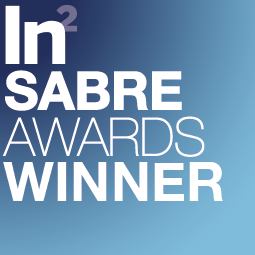DC:
10 G Street, NE
Suite 710
Washington, DC 20002
Introduction to Corporate Communications in 2024
In 2023, effective communication is more vital than ever for businesses wanting to stand out. Corporate communications is all about how companies talk to their customers, partners, and the world. It’s not just what you say; it’s how you say it and who hears it. This section will cover the basics, giving you a clear starting point. Think of corporate communications as your business’s voice. Whether it’s through social media, press releases, or internal memos, your goal is to make that voice clear, consistent, and strong. The right strategy can lift your brand’s presence, making sure you’re heard over the noise. We’ll dive into how this is essential for your brand’s success and outline strategies to amplify your message in 2023.
The Role of Digital Media in Corporate Communications
In today’s digital age, mastering digital media is not just an option for corporate communications; it’s a necessity. Digital media encompasses all electronic devices and platforms used to convey information, including social media, websites, email, and mobile apps. Its role in corporate communications has grown exponentially, primarily due to its wide reach and the ability to engage directly with the audience. Let’s break it down. First, digital media allows corporations to share their story far and wide. Whether it’s showcasing achievements, sharing insights, or addressing concerns, companies can communicate their narrative on a global scale. Second, it offers real-time interaction. This immediacy fosters a sense of community and loyalty among consumers, as they feel heard and valued. Third, analytics play a crucial role. Digital platforms provide detailed data on audience behavior, enabling corporations to tailor their communications strategies effectively. Lastly, cost-effectiveness is a significant advantage. Compared to traditional media, digital platforms often offer more bang for your buck, allowing for targeted campaigns that reach the intended audience without breaking the bank. In essence, the power of digital media in corporate communications cannot be overstated. It not just amplifies a brand’s presence but also enables a more dynamic, immediate, and interactive relationship with the audience.
Developing a Unified Brand Voice Across All Platforms
Having a consistent brand voice is crucial to making your brand recognized and trusted. Think of your brand as a person. Just like you’d recognize a friend’s voice in a crowd, your audience should identify your brand’s voice wherever they find it, be it on Twitter, your website, or a press release. To hammer this point home, imagine going through your friend’s social media and not being able to tell if the posts are indeed theirs because the tone keeps changing. Confusing, right? That’s how your audience feels when your brand’s voice fluctuates across different platforms.
First things first, identify your brand’s core values and personality. Are you professional and formal, or laid-back and casual? This character will be the foundation of your brand voice. Once that’s set, ensure everyone who creates content for your brand knows these guidelines. It might help to create a style guide that spells out your brand’s dos and don’ts in terms of language, tone, and even humor.
Remember, consistency is key, but so is flexibility. Your tone might slightly adjust depending on the platform (LinkedIn vs. Instagram, for example), but the underlying voice should remain unmistakably yours. That’s how you build a strong, cohesive brand identity that resonates with your audience no matter where they encounter you.
Importance of Transparency and Authenticity
Today, customers value honesty more than ever. They can spot insincerity from a mile away and tend to turn their backs on brands that don’t show their true colors. This is why transparency and authenticity are not just buzzwords—they’re crucial elements of successful corporate communications strategies. By being open about your business practices, admitting to mistakes, and sharing your brand’s journey, you create a bond of trust with your audience. This trust is the foundation on which loyalty is built. Remember, a loyal customer acts as a brand ambassador, sharing positive experiences with friends and family, essentially providing free marketing for your company. So, if you want to boost your brand’s presence in 2023, start by keeping it real. It’s simple – be honest, be you.
Integrating Social Responsibility into Your Corporate Communications
Adding social responsibility to your corporate communications isn’t just nice, it’s necessary. Today’s consumers expect companies to not only talk the talk but walk the walk. This means your business needs to actively engage in activities that benefit society. Whether it’s reducing your carbon footprint, supporting local communities, or ensuring fair labor practices, showing you care makes a difference. Here’s the kicker: when you share these efforts through your communications channels, your brand’s reputation gets a big boost. People love supporting businesses that do good. So, how do you start? First, identify causes that align with your brand values. Then, get involved in meaningful ways and talk about it – on your social media, in press releases, everywhere. Remember, being genuine is key. Don’t just do it for the likes. Do it because it’s right. This approach not only wins the hearts and minds of your audience but sets you apart from competitors. Integrating social responsibility isn’t a one-off task; it’s a continuous commitment that can redefine how the public perceives your brand.
Leveraging Influencer Partnerships for Enhanced Brand Reach
Teaming up with influencers is a game-changer for getting your brand out there. Why? Because influencers have loyal followers who trust what they say. Picture this: when an influencer talks good about your product, it’s like getting a thumbs-up from a friend. Immediate trust boost. Now, getting started, it’s not about picking any influencer. You want someone whose vibe matches your brand. Think of it as matchmaking for business. A fitness brand? Partner with a fitness guru. Tech gadgets? Find a tech enthusiast. This alignment means their audience will likely dig your products too. Remember, it’s not just about having a huge follower count. Sometimes, micro-influencers, with followers in the thousands instead of millions, can get you more bang for your buck. Their followers are often more engaged and loyal. Plus, working with micro-influencers is usually more budget-friendly. So, influencer collaborations? Big potential for spreading the word about your brand. Choose wisely, make authentic connections, and watch your brand reach soar.
The Impact of Internal Communications on Employee Advocacy
Good internal communication is like oil in an engine; it keeps everything running smoothly. When employees understand what’s going on in the company, they feel valued and part of the team. This isn’t just good for morale—it turns them into brand advocates. Think about it. When people feel connected to their work, they’re more likely to talk positively about their company outside work. This boosts your brand’s presence without spending a dime on advertising. Plus, employees who are well-informed are your best bet for spreading the company’s vision and values authentically. So, investing in solid internal communication strategies isn’t just about keeping employees in the loop; it’s about empowering them to amplify your brand’s voice in their circles. Remember, a happy employee is your brand’s best spokesperson.
Utilizing Data Analytics for Tailored Corporate Messaging
Data analytics isn’t just a buzzword. It’s your secret weapon to create messages that resonate. By analyzing data, you can understand who your audience is and what they care about. This means you can craft messages that are spot-on, instead of shooting in the dark and hoping they land. Here’s the thing: nobody likes generic messages. We live in a world flooded with information, so personalization isn’t just nice to have, it’s expected. Use data analytics to segment your audience. Break them down by age, location, or even past purchasing behavior. Once you’ve got those segments, tailor your messages to speak directly to each group’s interests and needs. For example, younger audiences might respond better to messages that are snappy and delivered via social media, while an older demographic might appreciate more detailed information and emails. The bottom line? Use the data. It tells you what your audience likes, and then use that knowledge to talk to them in a way that makes them feel understood. It turns your messages from noise into music to their ears.
Crisis Management Strategies for Today’s Digital World
In today’s fast-paced digital world, a crisis can spread like wildfire across social media and news outlets. That’s why having a solid crisis management strategy is non-negotiable for brands. First, always be prepared. Have a crisis communication plan in place before you need it. This means identifying potential crises and crafting response templates in advance. Second, when a crisis hits, speed is key. You must acknowledge the situation swiftly to control the narrative. This doesn’t mean rushing out an unthought response but rather quickly letting your audience know you’re aware of the issue and are handling it. Third, transparency is crucial. In the digital age, attempts to hide information or mislead the public can backfire spectacularly. Be honest about what happened, what it means for your stakeholders, and what steps you’re taking to resolve the issue. Fourth, monitor the situation closely. Use social media and other online platforms to keep an eye on public sentiment and the spread of information. This will help you adjust your strategy as needed. Lastly, learn from the crisis. Once it’s over, analyze what happened and why. Use these insights to strengthen your crisis management plan and prevent future occurrences. Remember, in the digital age, it’s not about if a crisis will happen, but when. Being prepared can make all the difference.
Conclusion: Building a Resilient Corporate Communications Strategy
In the end, boosting your brand’s presence isn’t just about shouting louder than everyone else. It’s about crafting a resilient corporate communications strategy that can adapt to changes and resonate with your audience. Remember, the core of a strong strategy involves understanding your target, clear messaging, engagement, measuring effectiveness, and being ready to pivot when necessary. By integrating these elements, your brand doesn’t just talk at people but starts meaningful conversations that build lasting relationships. The journey to enhancing your brand’s presence is ongoing, but by focusing on these strategies, you’re setting a solid foundation for success. Keep it straightforward, keep it relevant, and always be prepared to listen and adapt.




















